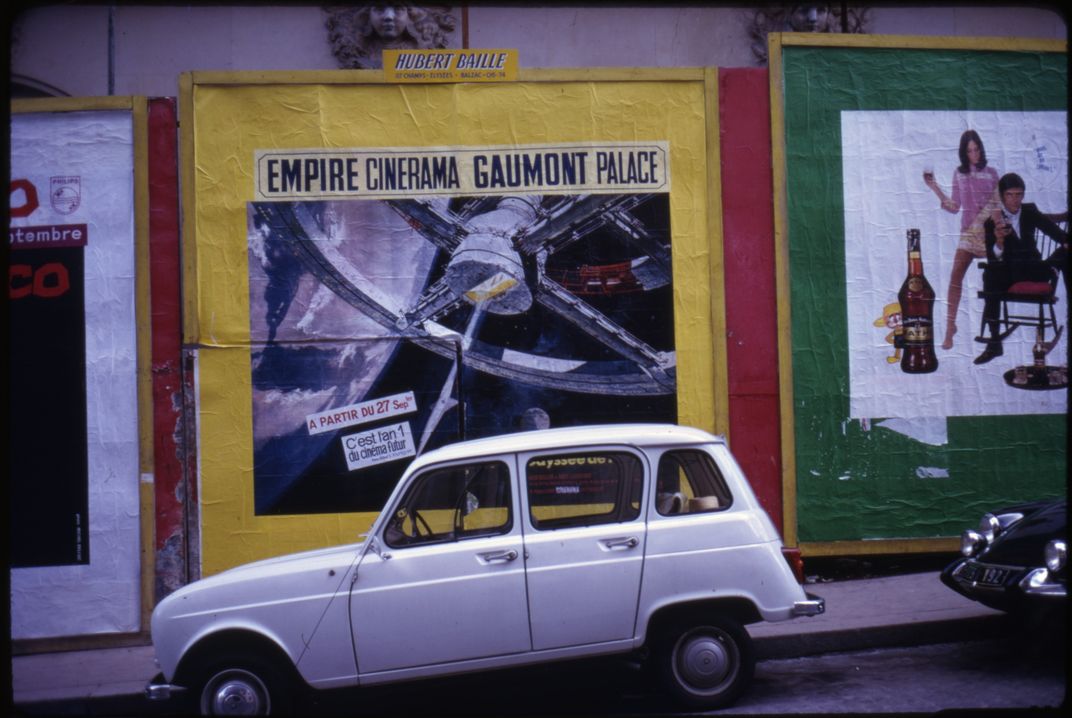“2001” Celebrates 50 Years
/https://tf-cmsv2-smithsonianmag-media.s3.amazonaws.com/blogging/featured/Clarke_2001.jpg.jpg)
Creating a work of popular culture still celebrated 50 years after its release is a notable achievement.
The origin story of the 1968 film 2001: A Space Odyssey has become well known. Director Stanley Kubrick based the film on Arthur C. Clarke’s short story “The Sentinel” and the two men wrote the screenplay together. The novel version of 2001: A Space Odyssey, written by Clarke, was not published until after the film debuted. The film itself premiered at the Uptown Theater in Washington, DC, on April 2, 1968, and opened nationwide later that week on April 6.
In 50 years, ‘2001’ has passed the test of time and become recognized not only as an iconic science fiction movie but also as a landmark film in any genre.
From the beginning, it was clear that the film’s hallmark was its special effects. Kubrick showed spacecraft that moved realistically – not zooming around like something from Buck Rogers. Moreover, Kubrick imagined a fully realized vision of regular human spaceflights in Earth orbit and beyond. The details delighted viewers as Pan Am-branded spacecraft approached Hilton hotels in orbit. However, achieving those special effects required so much time that lead actor Keir Dullea actually filmed another movie and starred in a stage play between his time shooting 2001 and when the film’s special effects were completed, just before its release.

Not everyone appreciated the film when it first appeared. Robert B. Frederick’s review in Variety in 1968 was a half-hearted endorsement at best. “A major achievement in cinematography and special effects,” he wrote, “‘2001’ lacks dramatic appeal to a large degree and only conveys suspense after the halfway mark.” But Chicago Sun-Times reviewer Roger Ebert saw both its flaws and its potential, writing in his 1968 review, “The fascinating thing about this film is that it fails on the human level but succeeds magnificently on a cosmic scale.”
2001 created memorable characters and created phrases that have entered our common lexicon. Memorably, one of the most iconic characters was HAL (an acronym for “Heuristically programmed ALgorithmic computer”), the voice-activated computer aboard the Discovery One, whose sentience put it at odds with the astronauts it was supposed to be serving. When Dullea’s character David Bowman requests, “Open the pod bay doors, HAL,” the computer’s response, “I’m sorry, Dave, I’m afraid I can’t do that,” sent chills down viewer’s spines just as much as if a human character had suddenly revealed his intent.
In 50 years, 2001 has passed the test of time and become recognized not only as an iconic science fiction movie but also as a landmark film in any genre. In 1991, the Library of Congress added 2001 to the National Film Registry as a “culturally, historically, or aesthetically significant film” deserving of recognition and preservation. Love it or hate it, Kubrick’s vision has become an indelible part of the film canon. As New York Daily News reviewer Kathleen Carroll wrote in 1968, summarizing what two generations of film lovers would appreciate, “[‘2001’] is not a movie; it’s an experience.”

